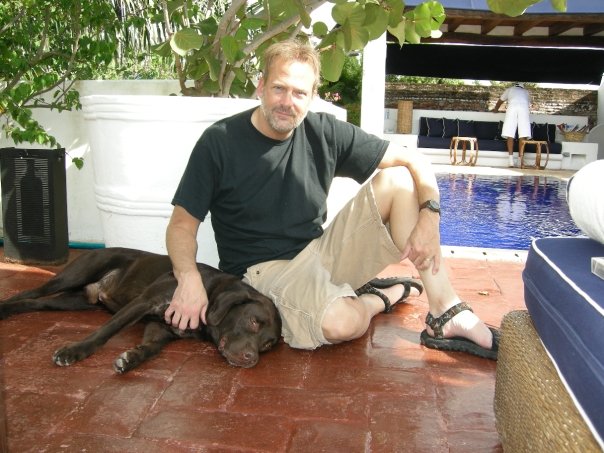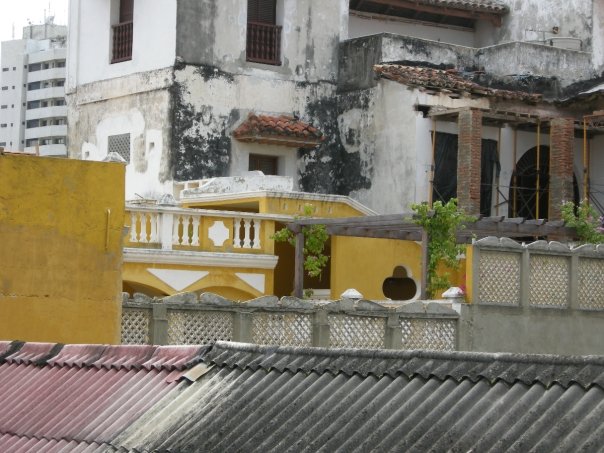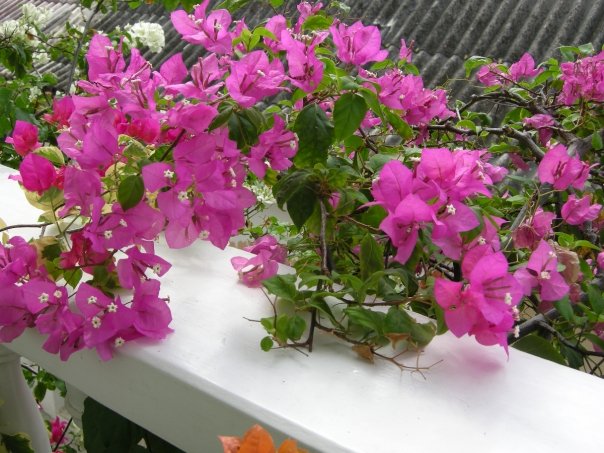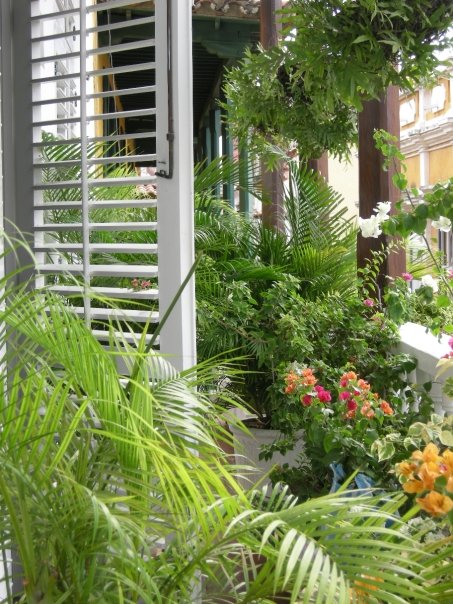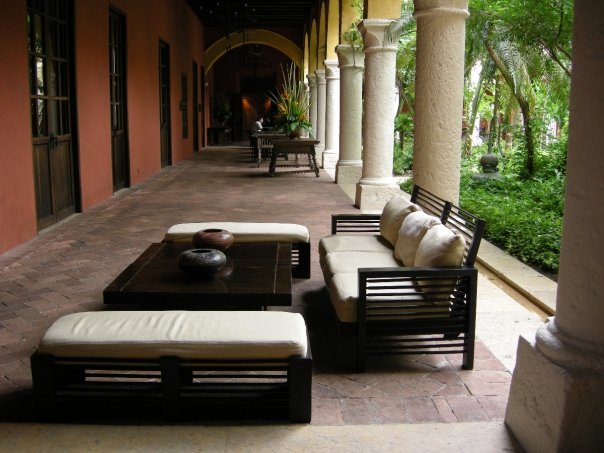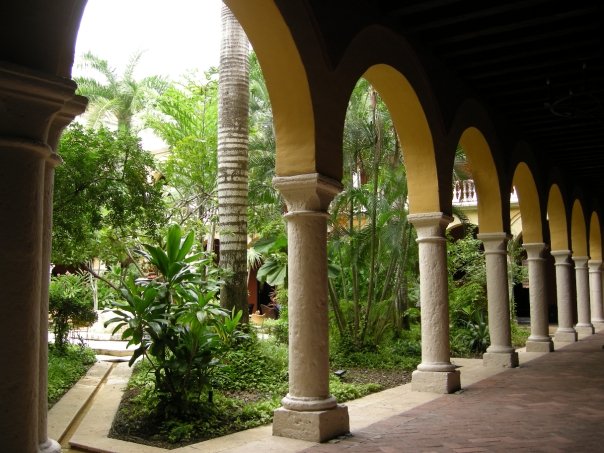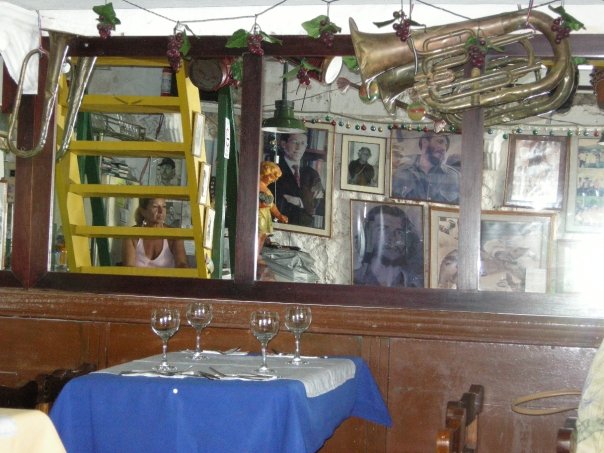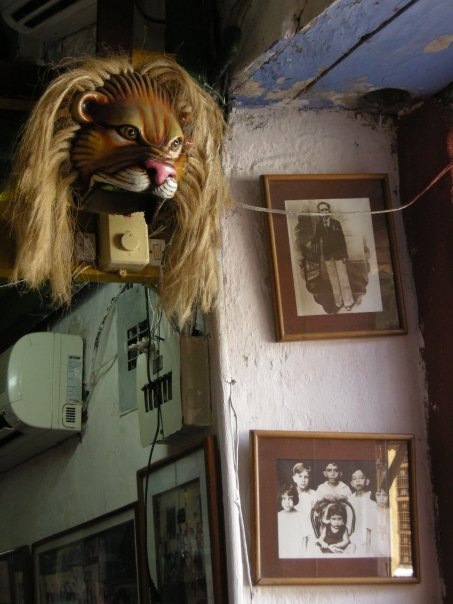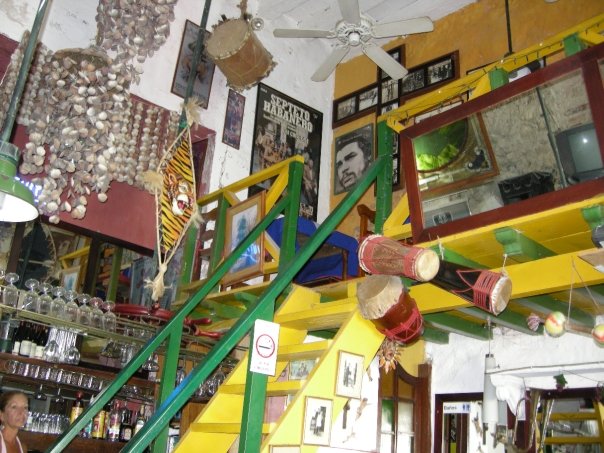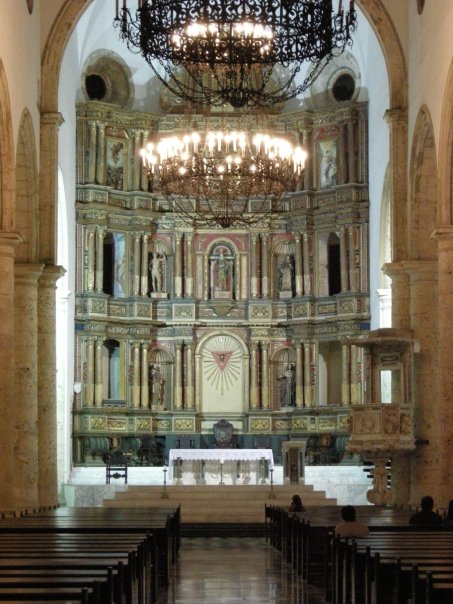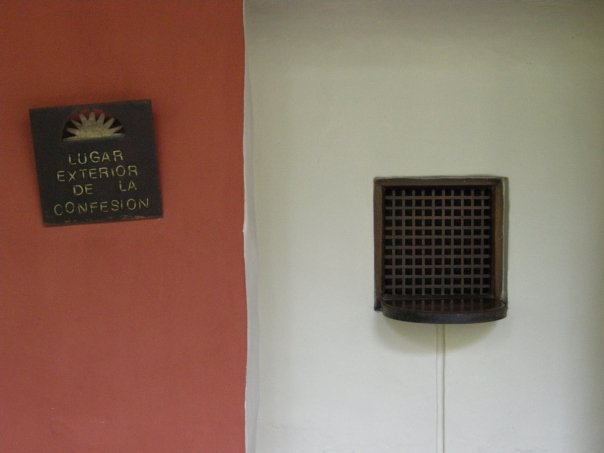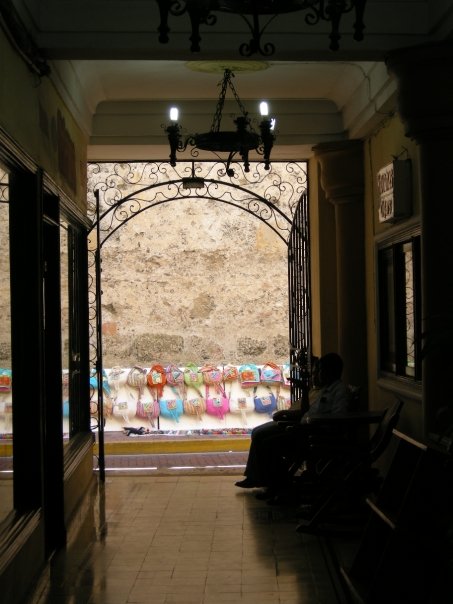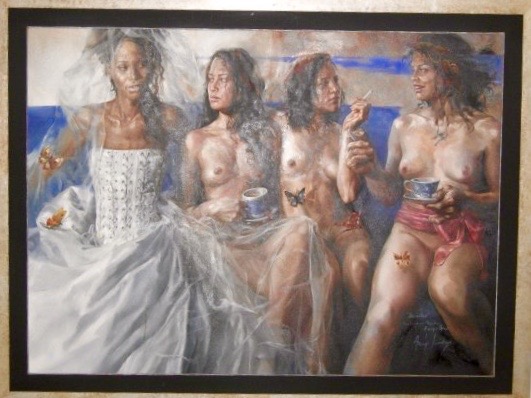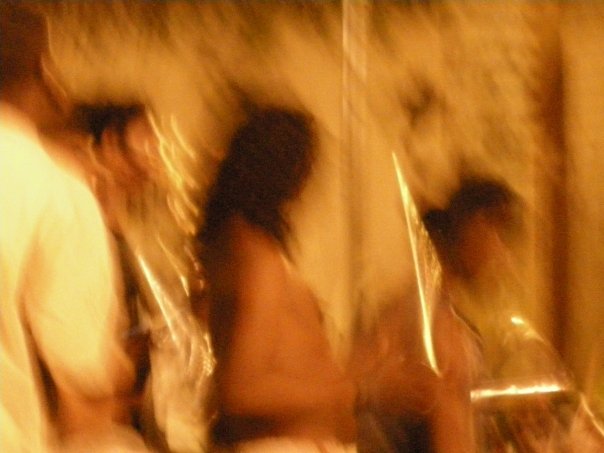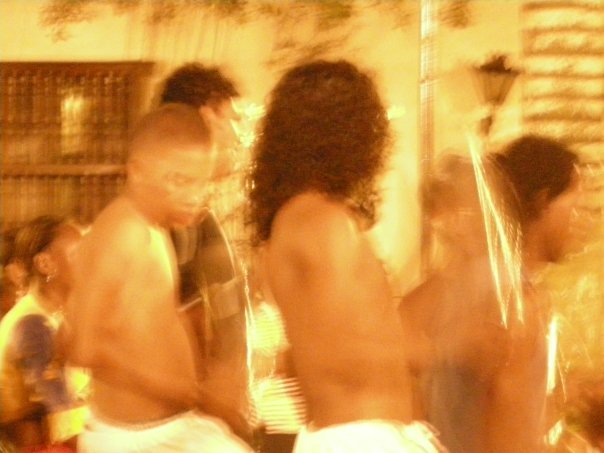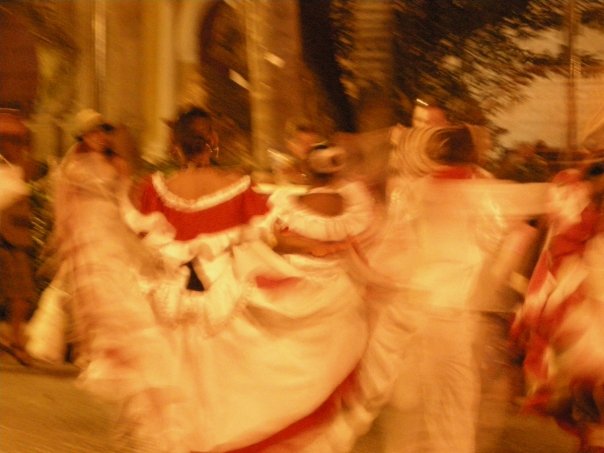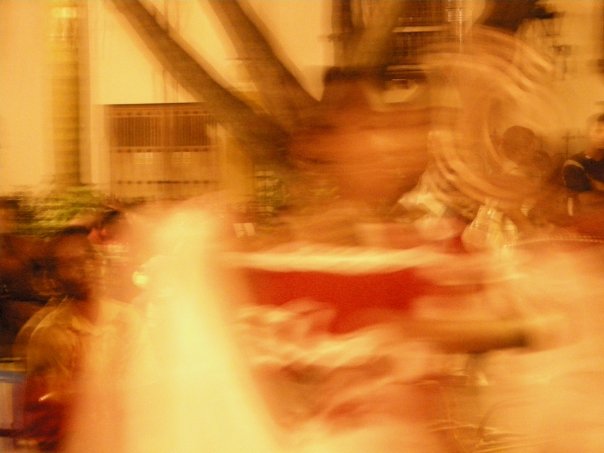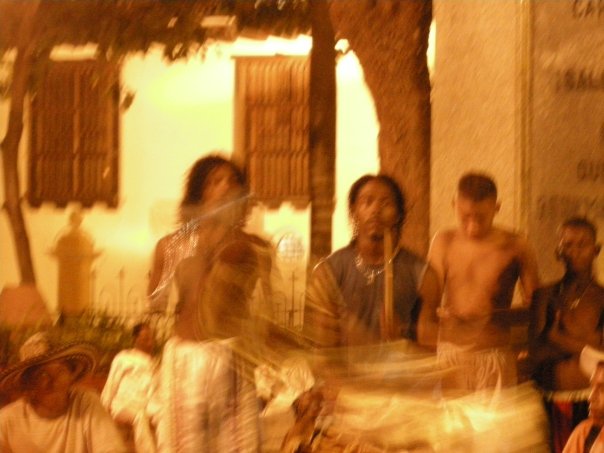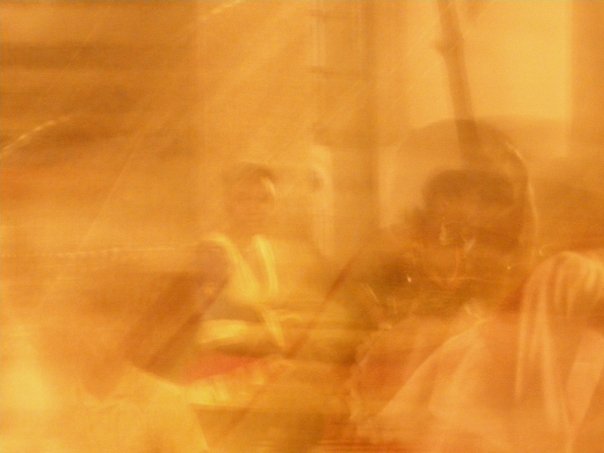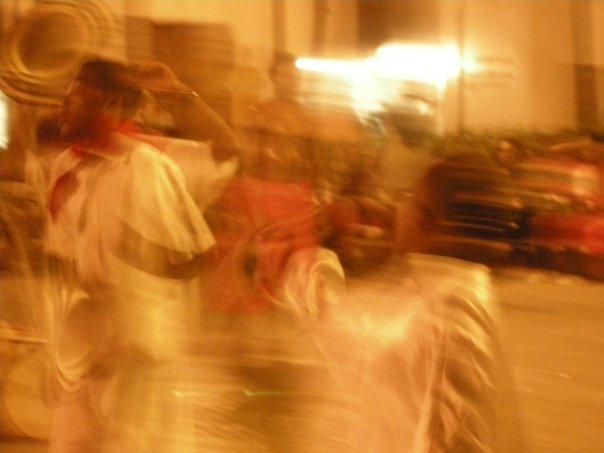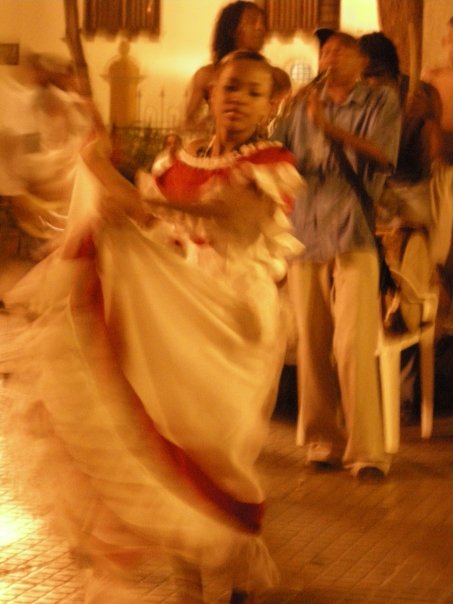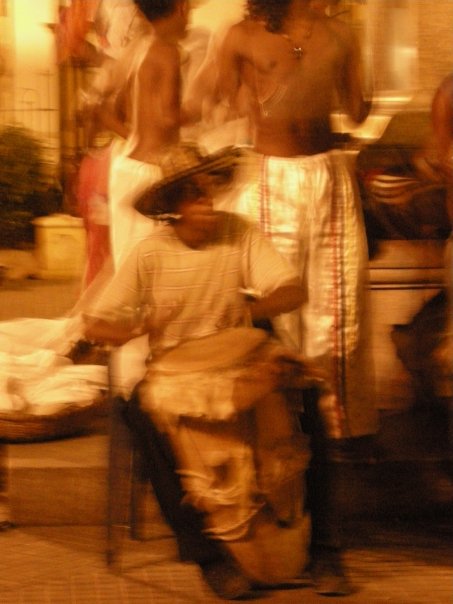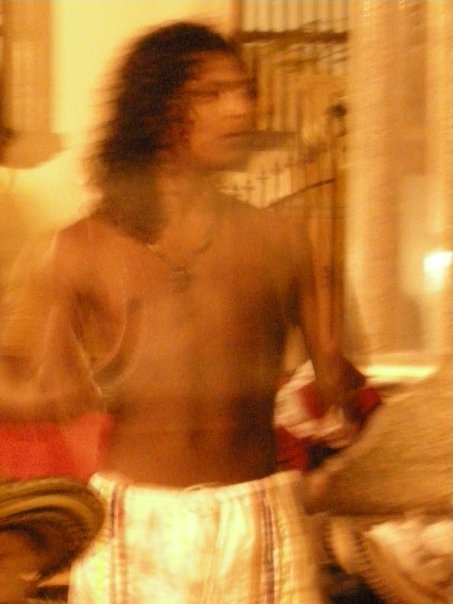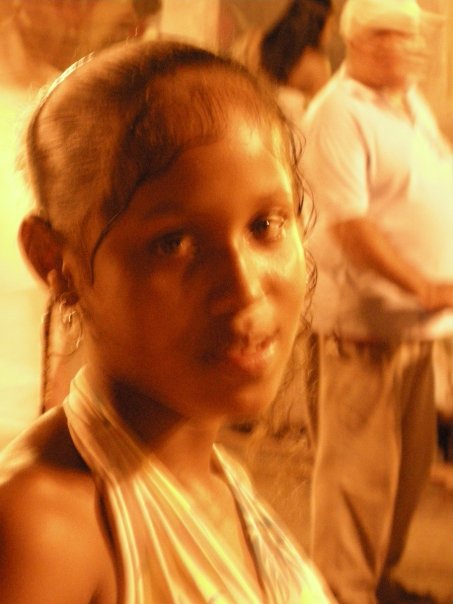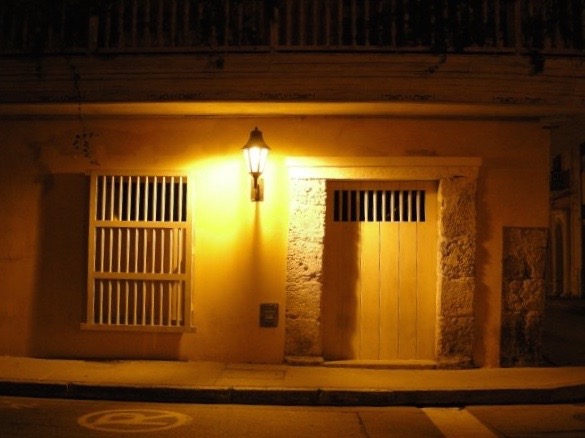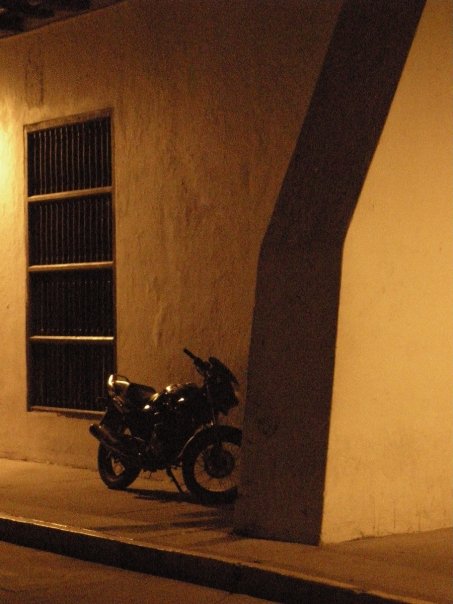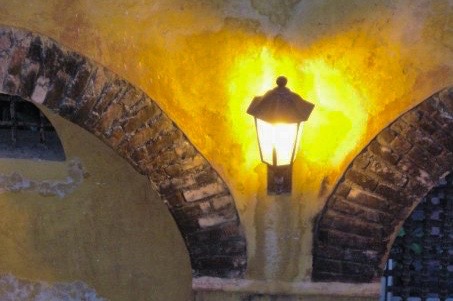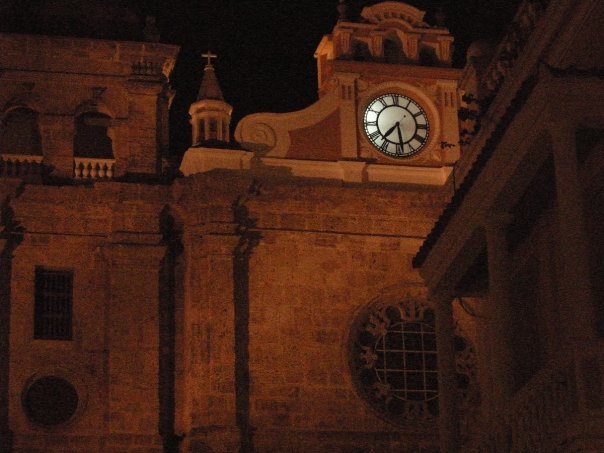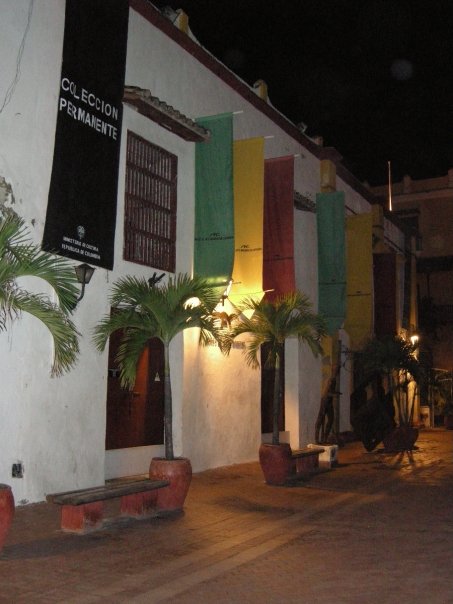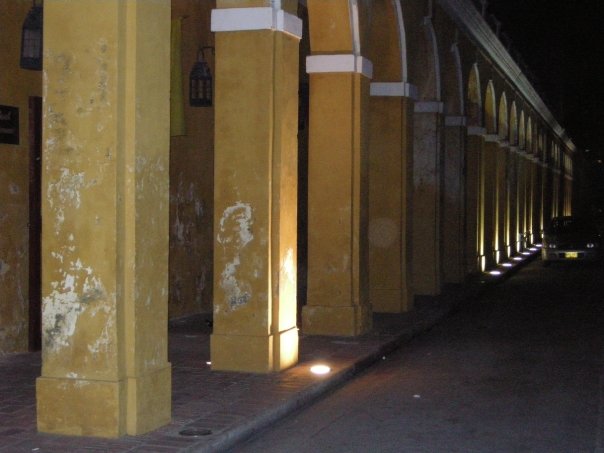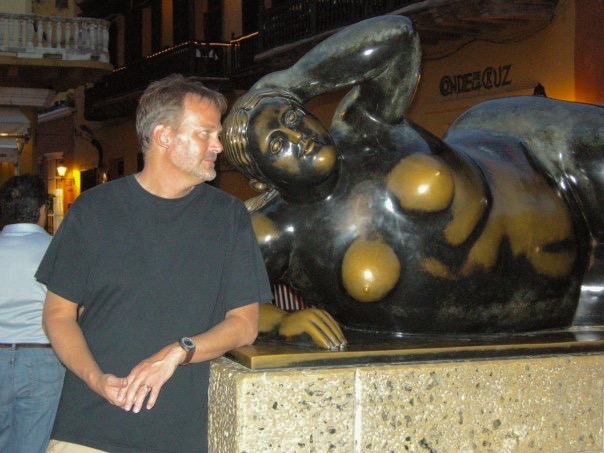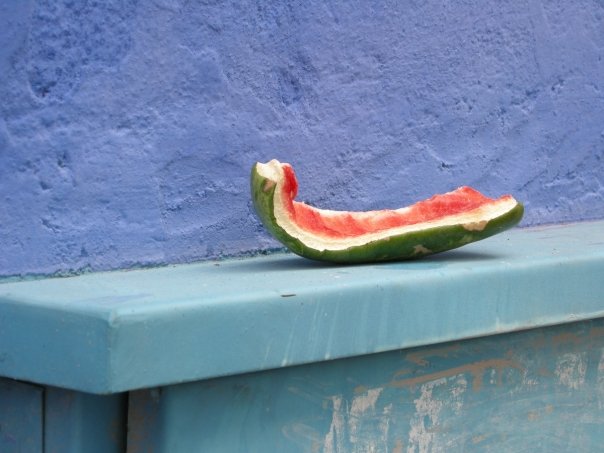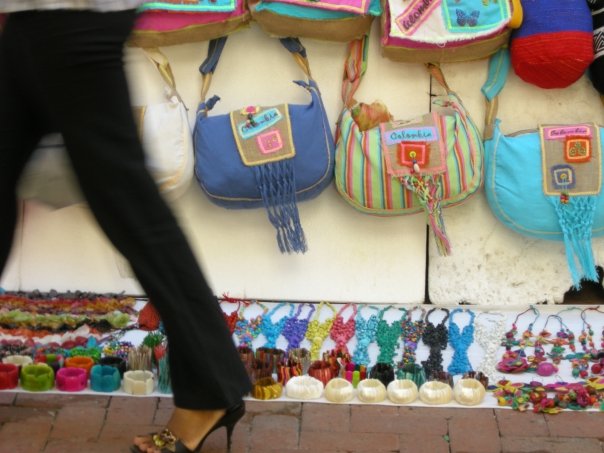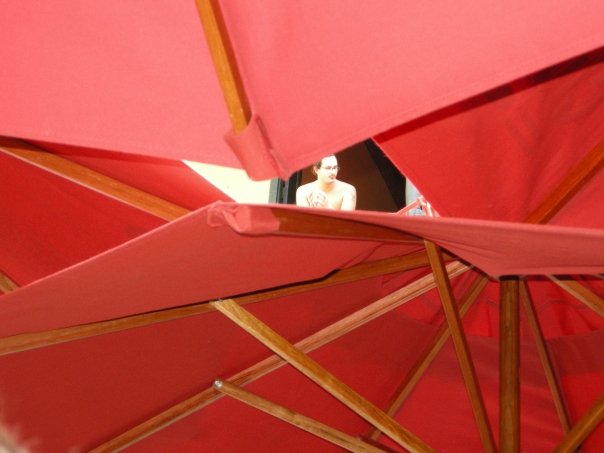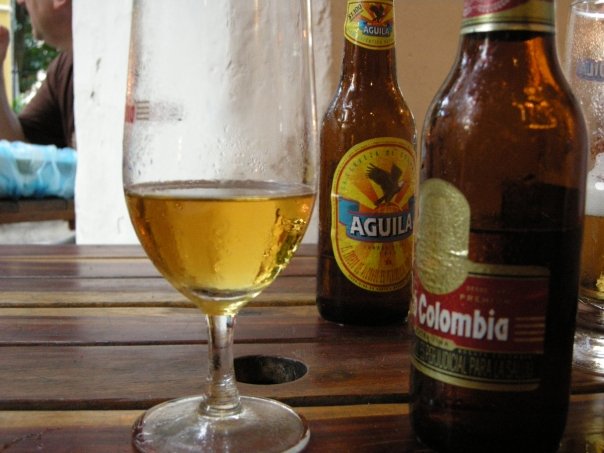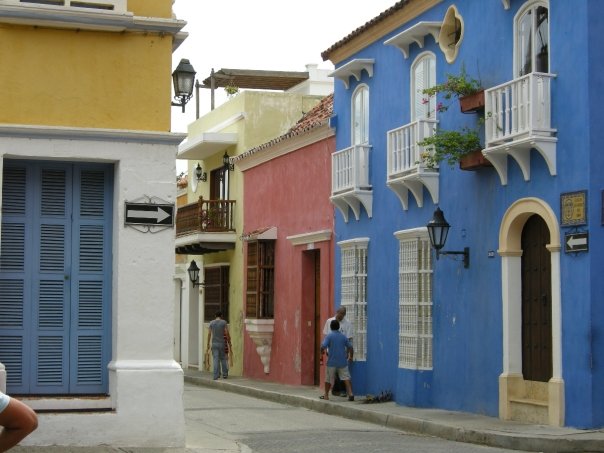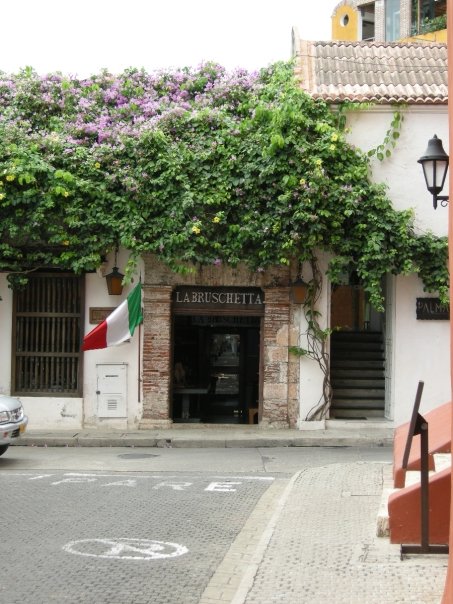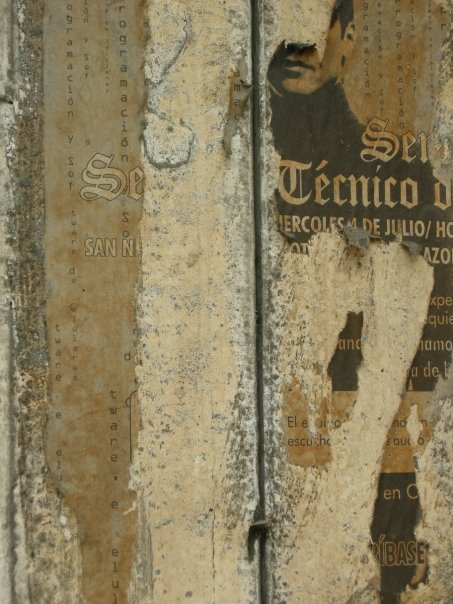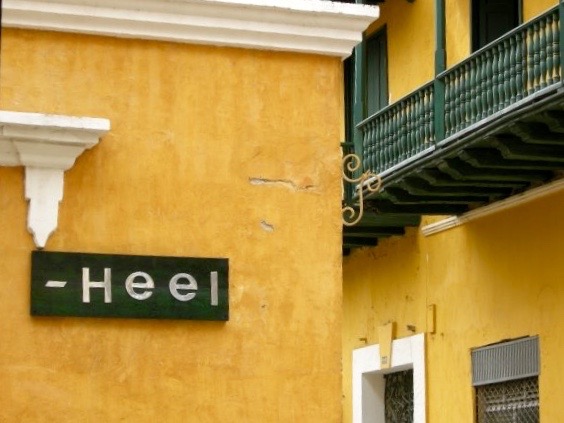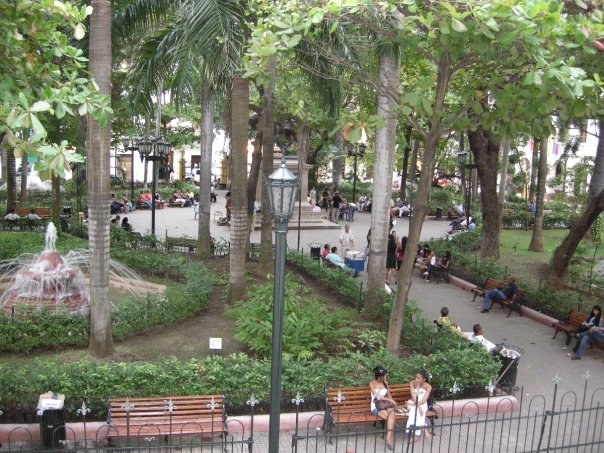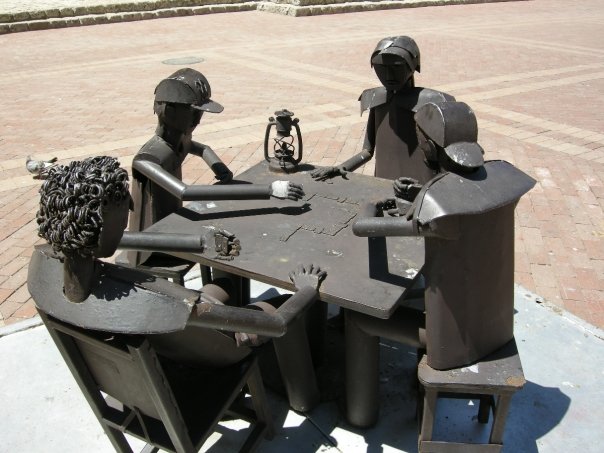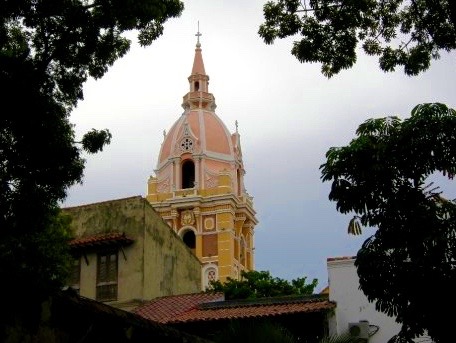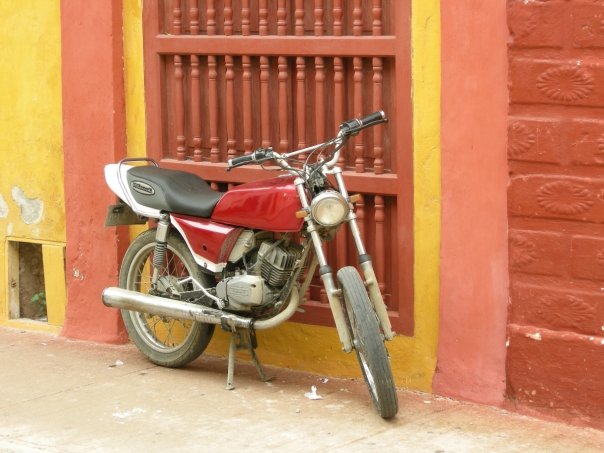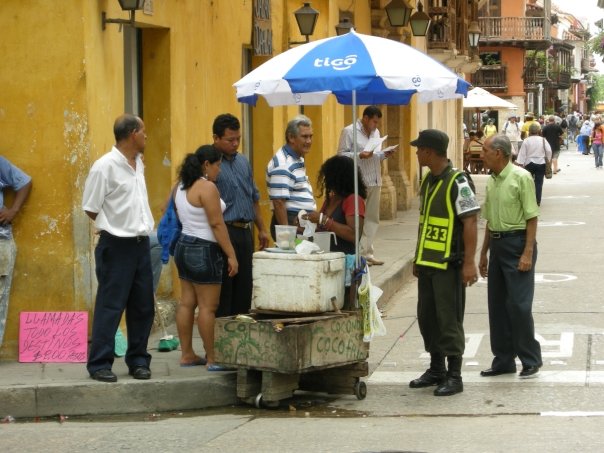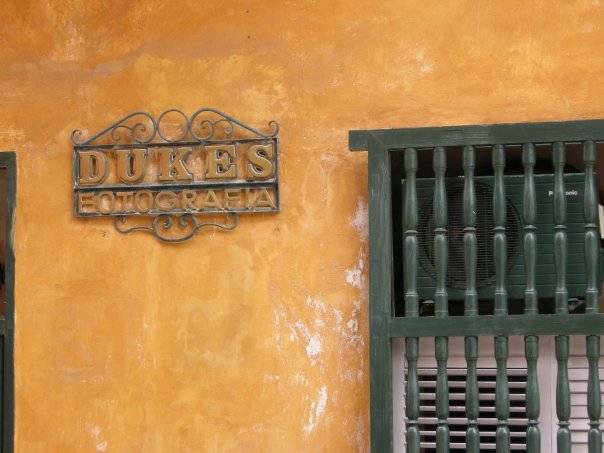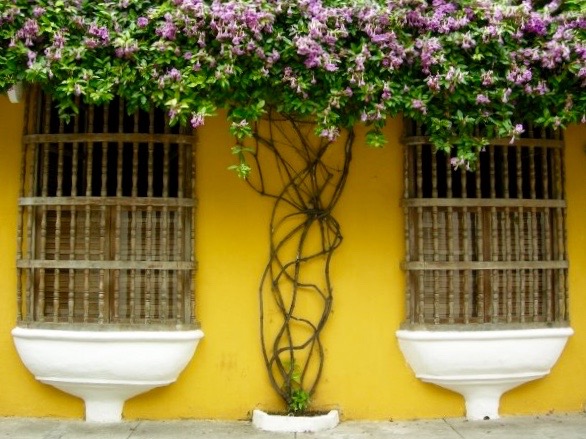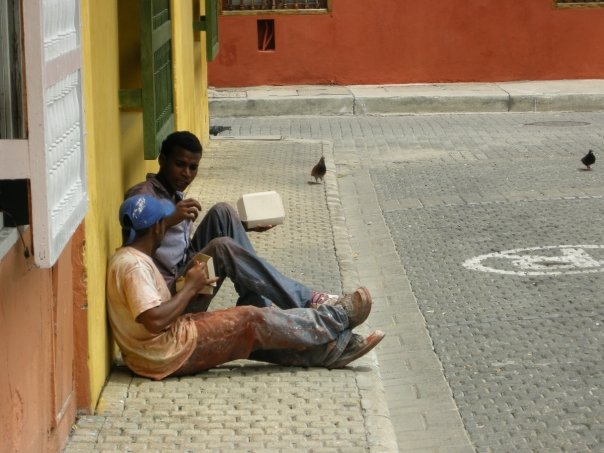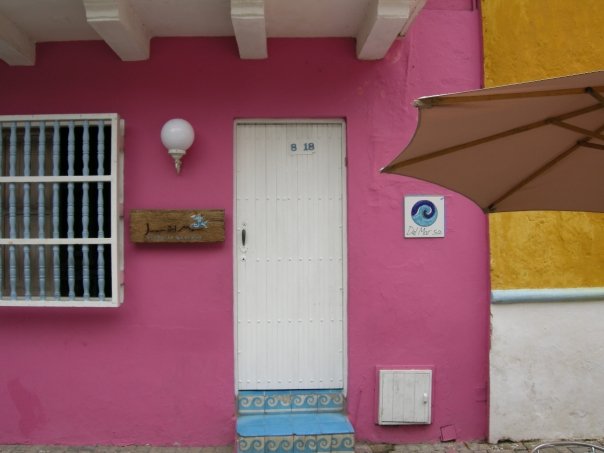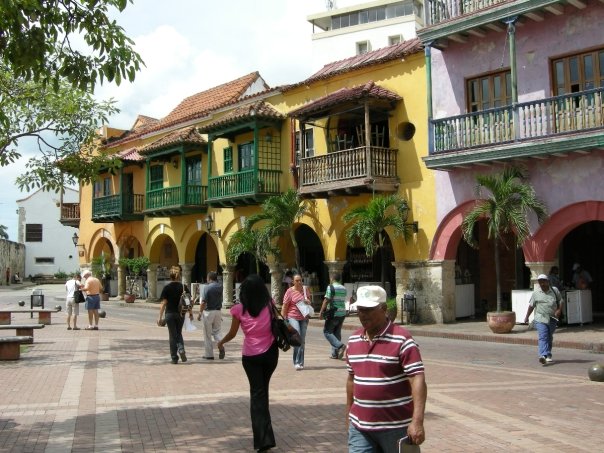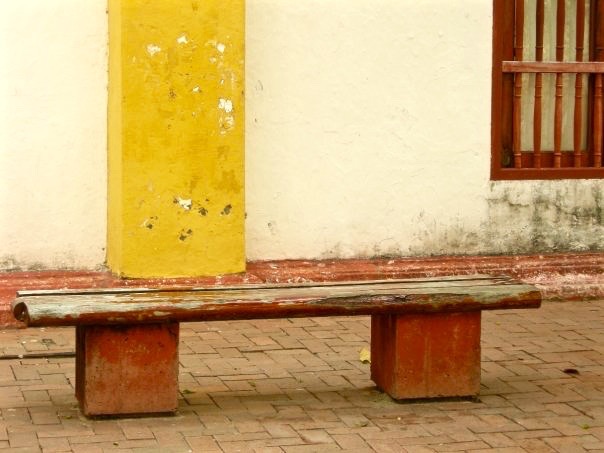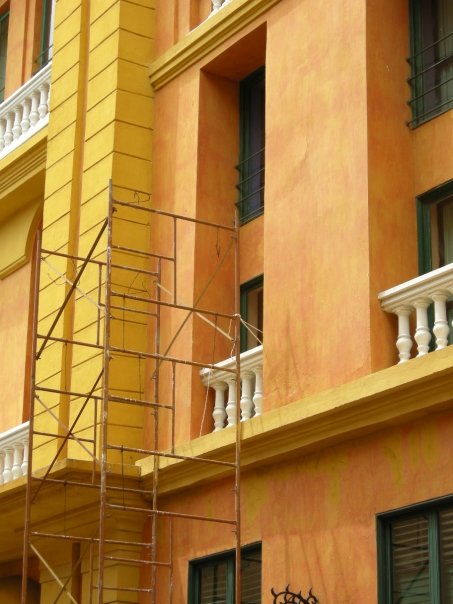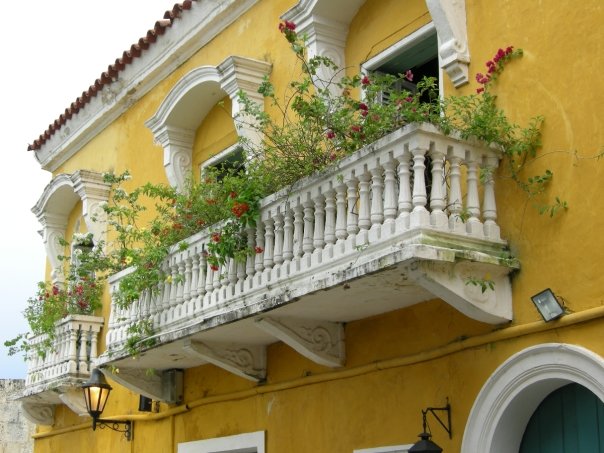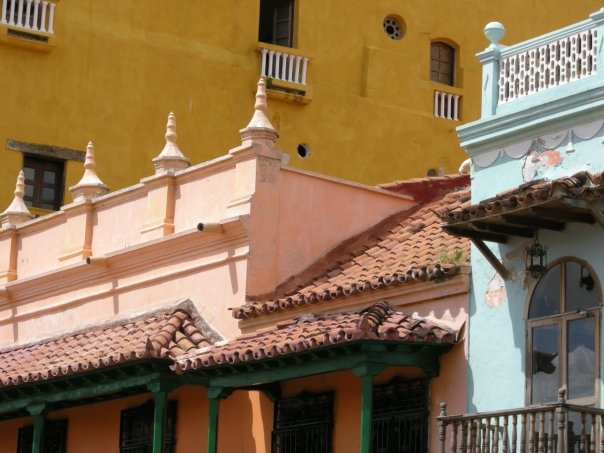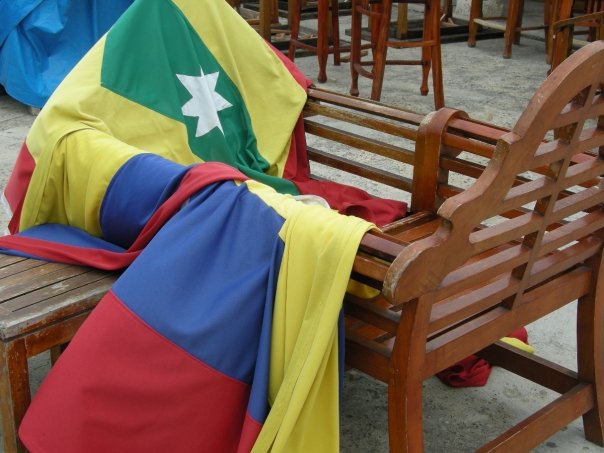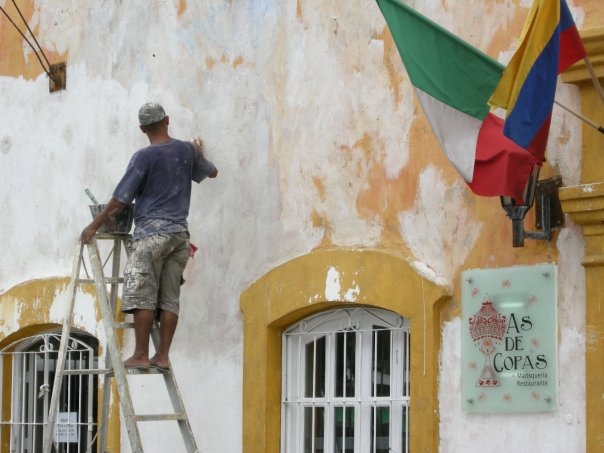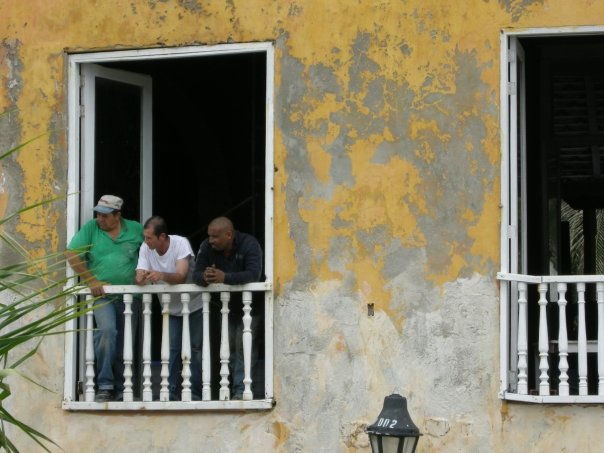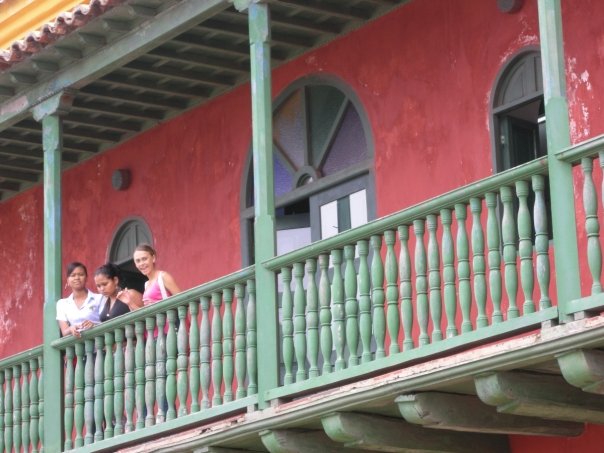Concepts like inside and outside tend to blur in Cartagena — indeed, in many tropical countries. Houses and other buildings in the old city are built around courtyards. Whether the courtyard counts as inside or outside is an issue I don’t really want to address. Same with rooftops.
The Hotel Agua had both a courtyard and a rooftop garden and pool. The views of the old city were striking, affording glimpses of both the beautiful facades of the city and the less beautiful inner and upper aspects of nearby residences.
Other much larger hotels had grand courtyards with enormous verandas, perfect for hanging out for a drink with friends. Those places were decorated in contemporary Colombian style, a look that combines Scandinavian elegance with South American colors and heat.
I preferred the smaller bars and cafés. The one below was my favorite. “Gabby comes here,” the barkeep told me, referring proudly to Cartagena’s native son, Gabriel García Márquez. I wondered how many bars in the US would so proudly announce their patronage by a then-living writer?
The cathedral was, of course, designed to over-awe and connect the congregation to the eternal. It was more restrained in its decoration than many South- and Central American churches I’ve seen, and to good effect.
Numerous alleyways were cut into the city’s buildings, resembling the medinas of Arabic nations. These further conflated the concepts of inside and outside.
This painting in a local gallery or museum caught my eye. I saw in it an ambiguous combination of gaiety and menace.
Perhaps that was similar to the ambiguity of place I felt in Cartagena. Inside or outside? Public display or walled-off secrets? Devils or angels?
Note: some of the photos above may have been taken by Susan Doktor.
